On Aug. 19, 1904, a grocer named Frank Backus joined dozens of merchants and fellow Mayfield residents in asking the Board of Trustees to ban alcohol sales.
For Backus and his compatriots, the reasons for the prohibition had at least as much to do with economics as morals. Just north of Mayfield, in the dry, posh and intellectual college town of Palo Alto, an economic boom was taking place, with houses renting for more than $25 a month. In the freshly incorporated town of Mayfield, meanwhile, the only successful businesses were saloons -- and their success didn't exactly spill over to the surrounding area.
Backus told the Board that Mayfield residents were weary of "renting our cottages for $5 to $6 a month" and watching property values go "down, down, down." The people of Mayfield, he said, were "tired of having the roughs from all around the country come here, get drunk and raise a row," according to Ward Winslow's "Palo Alto: A centennial history."
"We need life and new capital here," Backus said. "Fortune knocks at every door but once. It is knocking at the door of Mayfield now. If you allow this chance to go by, another may never come."
Backus prevailed. When the ban kicked in on Jan. 1, 1905, Mayfield officials showed they meant business by arresting every saloon owner who flouted it on New Year's Day (which is to say, every saloon owner). But it seemed to have the intended effect of making Mayfield's downtown more like Palo Alto's. With its competitive spirit well intact, Mayfield went on to construct sidewalks, buy new fire equipment, put numbers on its houses and form the Women's Improvement Association and a Boy Scouts troop.
Fast forward nine decades, and opportunity is once again knocking on the door of Mayfield, now incorporated into Palo Alto and better known as the California Avenue business district. After four years of planning, designing and litigating, the city is preparing to break ground this month on a massive renovation of California Avenue, a streetscape project that includes widening sidewalks, creating two new public plazas, replacing an old fountain with a new fountain sculpture and, most controversially, reducing driving lanes from four to two.
On Feb. 24, the City Council approved a $6.9 million contract with Redgwick Construction company to commence the streetscape project, which has been snowballing both in scope and price since 2010.
On Monday, the city will officially kick off the streetscape project with a ground-breaking ceremony. Redgwick officials took their first tour of the once-and-future downtown last week to survey the site. In the coming days, workers will begin replacing a 74-year-old water main. After that, construction crews will start tearing up the streets and sidewalks, sprucing up the landscaping, installing new benches and newsracks, enhancing crosswalks and re-striping lanes -- work that is expected to stretch until the end of the year.
Since the time of Frank Backus, California Avenue has been as remarkable for what hasn't changed as for what has. Saloons have given way to salons, but the passionate skepticism, artisan leanings and underdog sensibilities of the business district have scarcely diminished. There is a strong sense around California Avenue, as elsewhere in the city, that the business district is still playing second fiddle to the affluent and chic University Avenue.
Merchants have plenty of good reasons to feel neglected. The surface of the four-lane strip is scarred with tarry lines; sidewalks are crumbling; the birdbath fountain near the entrance to the Caltrain Station has been dry for years; and no one ever refers to University Avenue as "the other downtown."
Adding injury to insult, in September 2009, California Avenue became ground zero for what was later labeled the "Tree Massacre." The city's Public Works staff, hastily and with scarcely any outreach to the wider community, chopped down 63 holly oaks on California Avenue within two days.
The immediate outpouring of outrage was so vehement that then-Councilman John Barton called the flood of emails he received the most uncivil he had ever seen. (One city arborist took it a step further and, in an internal memo, complained that "it sounds like the residents are about to lynch the arborist.") City Manager James Keene and then-Public Works Director Glenn Roberts immediately issued public apologies, launched an internal investigation and adopted new rules for future tree removals, including extensive outreach.
For the project's many supporters, the ambitious streetscape project is a way to make up for both the decades of neglect and the tree debacle of 2009. Todd Burke, president of the homeowners association at Palo Alto Central, a condominium complex on California Avenue, said he is one of many building residents who are looking forward to the project's completion. Burke, an Illinois native who moved to the area in 2007, became civically engaged in the project in 2009, when he came home from a business trip and saw the street denuded of trees. On Sept. 21 of that year, he was one of several residents to express concern about the clear-cutting, noting that he hadn't received a single notification from the city. He described the operation as "mind-boggling" and said the street "looked like we've been bombed."
Now, Burke eagerly awaits the changes. The tree disaster, he told the Weekly, now appears it may have been a blessing in disguise.
"What it did was raise the awareness of the project: Now that we screwed up this bad, how do we get it right?" Burke said.
On a recent tour of the commercial strip, Burke pointed out the many existing elements of California Avenue that he won't miss: There's the lonely fountain ("The thing has been off for like five years."); the skeletal bike racks that look like giant coat hangers fused together; the bike lockers at the Caltrain station, which will be moved to make way for a new public plaza ("Why it was ever a bicycle-storage-locker piece of land I don't really understand."); and the white truck speeding past the stop sign on Ash Street ("You saw that, right?").
The revised streetscape plan will add a host of traffic-calming measures, including raised mid-block crosswalks and bulb-outs with landscaping. Intersections with four-way stops will get left-turn lanes to minimize traffic backup. There will be new benches, kiosks, newsracks and parking spots for bikes. There will also be two new plazas, one by Park Boulevard near the Caltrain station fountain and another "flexible" plaza on Birch Street, which would accommodate an expansion of the California Avenue farmers market on Sundays.
Burke acknowledged that there is some skepticism in the area but said most of the residents in his complex look forward to the changes. They expect the project to both raise their property values and create for them a more walkable neighborhood.
City staff members have made a similar argument in support of the project. Thomas Fehrenbach, the city's economic development manager, cited at a Feb. 14, 2011, City Council meeting various comparable streetscape projects, including one on Valencia Street in San Francisco. He said 37 percent of the merchants on the street saw sales improve in the years following the project and none saw declines. Furthermore, 73 percent thought the street became more attractive and 65 percent said safety had improved. The project will create a "sense of place-making," Fehrenbach said, which will entice people to "stay a little longer and spend a little more money."
If there is one thing that just about all supporters and opponents agree on is that they don't want to see too much development on the avenue, though there is little consensus on what exactly that means. Burke said some some growth is inevitable but he'd hate to see retail replaced with office buildings.
"There is a point at which too much density is too much density. I definitely don't want to see us overdeveloped," Burke said.
Former Vice Mayor Jack Morton, who is now the president of the California Avenue Business Association, shares this concern. In an interview, he warned that the small-town flavor of California Avenue is dying out as money and denser buildings arrive -- a trend that the streetscape project will likely accelerate. He predicted that within the next decade, many of the one- and two-story buildings on the avenue will make way for three- and four-story buildings; rents will skyrocket; and the kinds of small businesses that the avenue currently boasts will disappear.
"We now bring 65,000 people in every day," Morton said, "We can bring in 80,000, but the only way we'll do that is by densifying. They'll just simply densify, and the community will have to bear the burden."
The changes have already started. As the Weekly reported last week, longtime businesses Bargain Box and Avenue Florist are expecting to leave California Avenue in the coming months because of a recent change in ownership of their building. The property, at 341-7 California Ave., was purchased by a corporate entity called 341 Cal Partners LLC, and plans are underway to extensively refurbish it.
Down the street, Cho's Mandarin Dim Sum is also on its way out. The owner of the dimly lit hole-in-the-wall received a notice in January informing him that he had 60 days to leave -- a deadline that arrives on March 16. Building owner Sue Ross told the Weekly at the time that she plans to gut and renovate the building, making it more like the Michelin-rated Baume next door. That restaurant arrived in 2010 and offers dishes such as "deconstructed vacherin" and caviar Bourbonnais. Though it's not clear yet who will replace Cho's, the new tenant is unlikely to sell eggrolls for $1 or a pork bun for 85 cents.
In another possible sign of things to come, eatery Chez Franc has recently moved into 415 California Ave., a building once occupied by Know Knew Books. Chez Franc plans to sell hot dogs in the $13 to $17 range. These include "cassoulet dog," which is made of duck confit, beef cheeks and bean puree.
In lamenting the rising rents, Morton speaks from experience. Last November, he moved his accounting practice on Cambridge Avenue out of the neighborhood, unable to compete with "the dollars that high-tech companies are paying," Morton said. He ended up on East Bayshore Road, across U.S. Highway 101.
"I was there for 35 years," Morton said of the California Avenue district. "My heart is still there."
But from the city's perspective, the area is uniquely qualified for an injection of density, particularly if it includes small apartments for high-tech workers and fresh startups to fill up what they hope will become the city's next "tech corridor" on Park Boulevard.
The California Avenue area is the only part of Palo Alto that the city has designated as a "preferred development area," a title that makes it eligible for grant funding relating to development projects. Because of its location, between the Caltrain station and El Camino Real, California Avenue is seen by planning commissioners, planning staff and the council as ripe for growth. Planning Commissioner Michael Alcheck summed up this view in November, when he described California Avenue as "an epicenter" and said that the sooner the city starts to appreciate it as such, the better. He encouraged his colleagues "to think about high-density and medium-density as not necessarily a negative thing."
"When people say real estate is about three things -- location, location, location -- this is the kind of thing we're talking about," Alcheck said.
In that sense, the streetscape project is emblematic of the broader effort to create a new identity for California Avenue, an effort that's been on planners' minds for years.
In 2006, the city created a special zoning overlay that allows developers of mixed-use projects -- ones that combine office, retail and/or residential space in the same building -- near the Caltrain station to build more densely. The so-called "transit-oriented development" overlay has resulted in the three-story Birch Plaza, which includes eight townhouses and office space, and a much smaller office and residential building at 420 Cambridge Ave.
And last month, the city's Planning and Transportation Commission endorsed a new "concept plan" for the entire business district, stretching south to the area around Fry's Electronics. The document, which is in effect a new vision for the California Avenue area, will become part of the city's Comprehensive Plan and includes as its main components bike enhancements, mixed-use projects and denser buildings near the train station.
Not that developers need too much encouragement to come to California Avenue, where growth has been steady for years and is now surging.
Large developments such as Birch Plaza, Park Plaza (a mixed-use project at 175 Park Blvd.), a new three-story office building at 260 California Ave. and the block-long complex around Equinox Gym a few blocks south all have won city approval. Park Plaza alone will bring more than 100,000 square feet of new development, including 82 apartments.
Across El Camino, things are also about to get busy. Stanford University is preparing to construct 180 housing units on California Avenue as part of its 2005 agreement with the city. Work is also set to commence soon on the College Terrace Centre, a three-story development that the council approved in December 2009 but that languished until recently because of funding problems. Once built, the project will include 45,000 square feet of office space, eight units of affordable housing and an upgraded grocery store to occupy a spot once filled by JJ&F Market.
Not all proposed projects are guaranteed to come to fruition. There is 2755 El Camino Real, a four-story office building proposed for a former parking lot at one of the city's busiest intersections, a corner of Page Mill Road. The project, which requested a controversial "planned community" zoning, is suspended for now while the city revises its rules for planned-community projects.
In December, developer Jay Paul Company withdrew one of the largest "planned community" applications in the city's history -- for a 311,000 development at 395 Page Mill Road, next to the AOL headquarters. That development, a source of anxiety for land-use watchdogs and Ventura neighborhood residents, would have brought more office space to the area than Palo Alto's entire downtown has seen in 30 years. In withdrawing its application, Jay Paul cited the "political climate," a reference to recent grass-roots acrimony over new developments.
Even without the Jay Paul development -- or the streetscape project -- the gap between Palo Alto's original downtown and its "other" downtown is already narrowing.
The California Avenue area brought in roughly $1 million in tax revenues last year. That's still about a third of downtown's total, but at the same time, California Avenue is the only section of the city that has seen growth in every quarter since 2010. The district's revenue in the spring of 2013 was 24 percent higher than in the spring of 2010, according to a report from the city's consultant, MuniServices.
The number of high-tech workers in the area is also on the rise, with companies like Skype and Groupon opening offices.
If there's any sure sign of growth, it can be seen in the problems that come with expansion. Residents in surrounding neighborhoods have been watching their normally sleepy blocks fill up with commuter cars during business hours. Following in downtown's footsteps, citizens from Ventura and Evergreen Park have recently undertaken their own block-by-block counts of parked cars, with the goal of helping the city diagnose the growing problem and come up with a solution.
Former councilman Morton is hardly alone in feeling like the current council has been a little too eager about allowing new development and not eager enough about addressing the consequences of development. Nor are his concerns new: As plans for the streetscape renovation were developed, 55 businesses petitioned the lane-reduction idea, and area merchants and residents filed two lawsuits challenging the city's traffic analysis and charging the council with violating state law in approving the project.
All that is past now, but some of the worry over a lack of foresight lingers. When the council discusses building new parking garages for the city, it focuses on University Avenue, even though the level of development around California Avenue now dwarfs what's happening downtown.
While a study to gauge downtown's capacity for new development is being looked at, California Avenue is the subject of a concept plan whose policies "encourage development at the higher end of the allowed density range."
For Morton, this is concerning.
"We wish the city had dealt with the parking issues prior to densifying the area, but that's not what we tend to do in Palo Alto," Morton said. "We tend to densify and then bemoan the lack of parking."
Some on the council agree. On Jan. 29, Councilman Greg Scharff spoke in favor of exploring a new garage on California Avenue, noting that the nearby Ventura neighborhood is becoming as congested with cars as the infamously inundated Professorville neighborhood downtown. Downtown already has a parking crisis, he said, and California is heading in the same direction.
"If we do nothing and don't build a California Avenue garage, that's on us," Scharff said at the meeting of the council's Infrastructure Committee. "I think that would be shame on us."
The garage discussion will continue to unfold in the next year or two, as the council continues to winnow down its long list of infrastructure priorities. But in the meantime, Palo Alto staff is taking immediate steps to reduce the impact of construction on area businesses. A new shuttle will be introduced to ferry workers from Stanford Research Park to California Avenue during lunch time. New parking spots will be made available on Birch to compensate for loss of parking in areas where work is underway.
The city has also agreed not to close more than one traffic lane per block at a time and to limit construction to the hours of 8 a.m. to 5 p.m., with a "quiet period" between 11:30 p.m. and 1 p.m. Staff has also made some design changes to the project, including a right-turn lane on California Avenue leading to El Camino and a left-turn lane leading into Mollie Stone's, near Park. Both adjustments seek to reduce traffic backups when there is otherwise just one lane in each direction.
Early signs show that these actions, along with the project's evolution, have helped alleviate merchants' apprehension.
After two years of battling the city, critics have seemingly learned to stop worrying and love, or at least accept, the streetscape project. In March 2013, before the council voted to install all new streetlights on California Avenue, Terry Shuchat addressed members and spoke in support of the action. Shuchat, who owns four buildings on California Avenue and whose camera store, Keeble & Shuchat, has been an avenue anchor for nearly half a century, had been vehemently opposed to the lane reduction and had sued the city to stop the project. But all the add-ons had him echoing the Beatles and urging more investment.
"I have been a vocal opponent of the redo of California Ave., but it's getting better all the time with more money, more benefits coming into it," Shuchat said. "I'm totally in favor of the lighting."
Jessica Roth of European Cobblery, who in 2010 urged the regional Metropolitan Transportation Commission to withhold grant funds from the streetscape project, now urged the council not to do "the bare minimum."
"Do it right, rather than a low-budget or an incomplete job," Roth said. "We hope in the end the project will be worth the impact that it will have on our businesses. Let's make it a complete beautification."
Mike Stone, the co-owner of grocer Mollie Stone's, said in a recent interview that while he is concerned about construction impacts, he no longer fears that the reduction of lanes will create horrendous traffic jams.
"I think once it's done, it's going to be great if California Avenue can realize the intent of what the city wants to come out with, whether you want to compare it to University Avenue or to (Mountain View's) Castro Street," Stone said. "It will be more consumer-friendly, and I think the neighborhood and the city will appreciate it when the final project comes out."
Read more coverage of the California Avenue streetscape project and its impact:
City to host Cal Ave ground-breaking Monday
California Avenue project's costs grow
Nothin' but lunch: What brings techies to Cal Ave
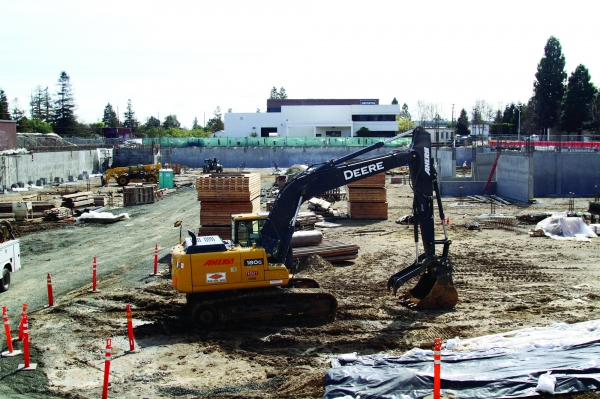
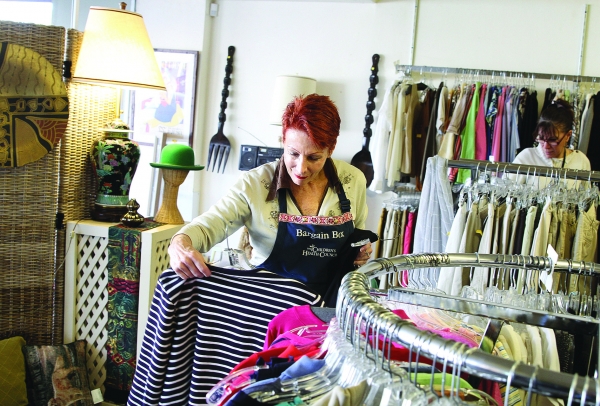
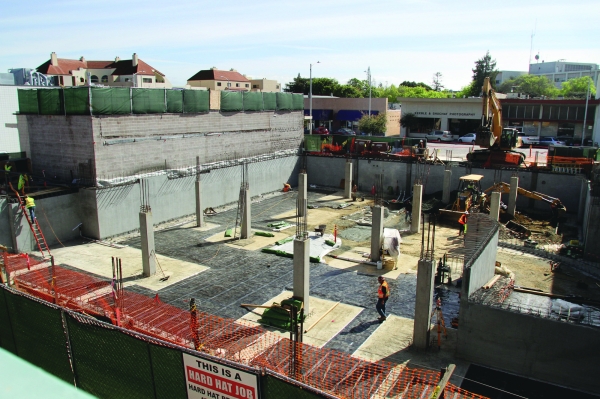
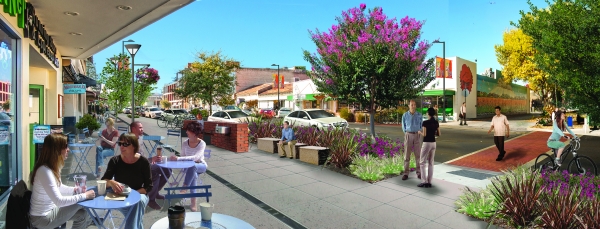

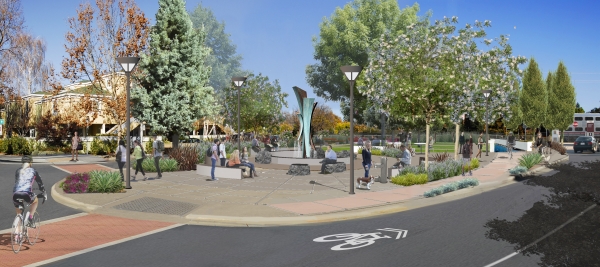
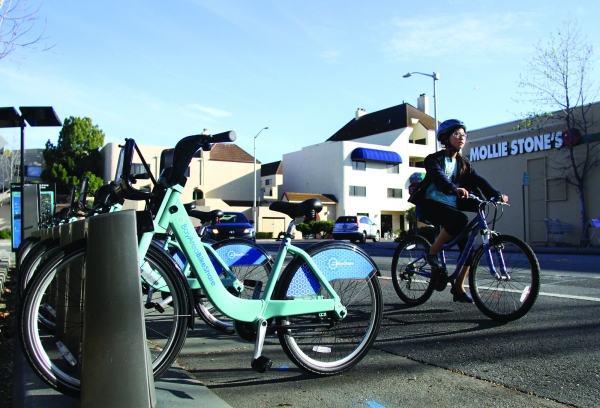
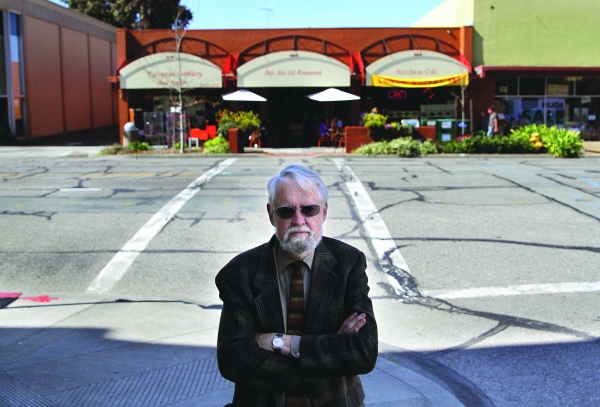
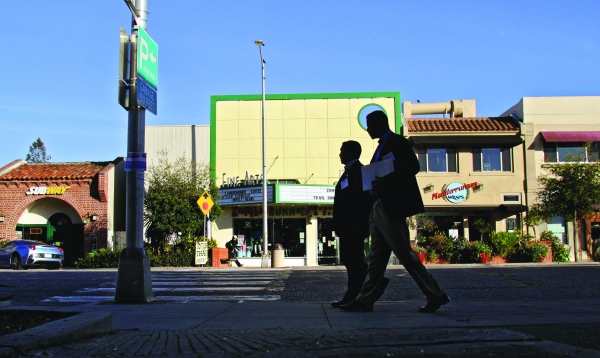
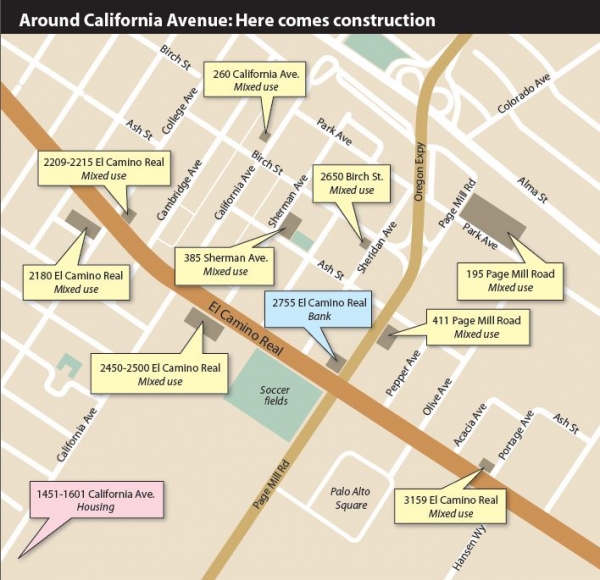
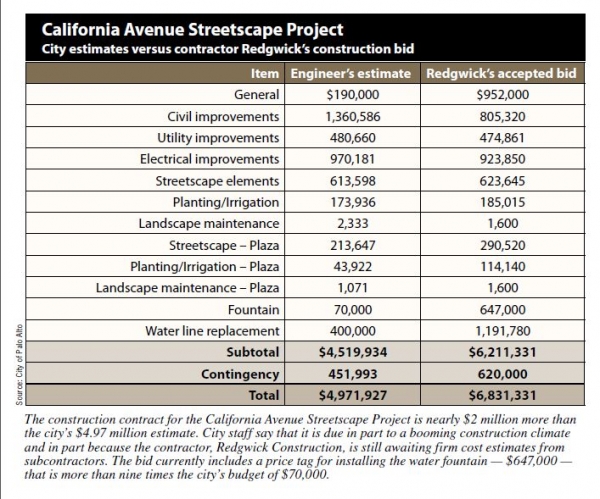


Comments
Mayfield
on Mar 14, 2014 at 9:46 am
on Mar 14, 2014 at 9:46 am
First off get it straight Mayfield was the original downtown by several decades before the city of Palo Alto was even a glimer in Leland Stanford's eye.
Second it seems that the we are seeing the answer to Palo Alto's own chicken and egg question that is the infrastructure came first before the enhanced density and vibrancy that comes with it.
This project truely will serve as a catalist for the transformation of the area and i predict with time will lead to Cal Ave retaking the crown from university avenue as the premier "downtown."
Evergreen Park
on Mar 14, 2014 at 9:49 am
on Mar 14, 2014 at 9:49 am
This is a great project which will really help this neighborhood significantly. I'm glad to see it finally off the ground. Some many other projects like this have been a huge benefit to all stakeholder and especially businesses who benefited from increased foot traffic in front of their stores.
Also, this is a great write up on the story. The other paper made the project sound completely negative.
Midtown
on Mar 14, 2014 at 10:02 am
on Mar 14, 2014 at 10:02 am
University Ave is overcrowded. There is no parking and even if you can get there, the sidewalks and businesses are too crowded to be useful.
I'm glad that the city is refurbishing our second downtown area. That will give businesses more room to flourish and attract more customers.
I just hope that the city improves pedestrian access to California Ave from the neighborhoods across the train tracks. That decrepit tunnel near the train station badly needs widening and brightening, or maybe replace it with a bridge.
Evergreen Park
on Mar 14, 2014 at 10:26 am
on Mar 14, 2014 at 10:26 am
I'm excited to see the plans for California Avenue re-development finally become reality. I've spoken to many neighbors who feel the same way. Once the project is complete and we experience improved lighting, wider sidewalks, and a more pedestrian-friendly ambiance, we will all look back and ask "What was the fuss all about?" As for businesses which can no longer compete in this increasingly expensive community, that is the nature of American capitalism. Either adapt or move on. We're adults and must accept this as a fact of economic life in this country. Likewise, if local consumers don't like the businesses taking root, new owners will also adapt or move on. And, so it goes.
Crescent Park
on Mar 14, 2014 at 11:09 am
on Mar 14, 2014 at 11:09 am
Great to see a project to update California Ave moving forward. Long overdue upgrade of the area. But I have to say the fancy drawings look pretty much like California Ave does now, just with trees. Oh, that's right it used to have trees. Really hope Palo Alto City Government gets this right. They seem to shoot themselves in the foot more often than not.
College Terrace
on Mar 14, 2014 at 11:16 am
on Mar 14, 2014 at 11:16 am
Finally. Glad to see this happening.
So many people have made and will continue to post comments that need explanation in advance.
For example, the comment "University Avenue is overcrowded" is an opinion more than a fact. Some might not like the volume of people there at times when it's more crowded. However, others might like the vibrancy offered by a crowd of people.
When a poster says a comment like "if you can get there" in reference to traffic, it usually means that the extra time necessary to get to your destination is more than you're willing to accept. So this is a relatively subjective statement about one's patience more than anything. If a place is vibrant, many are willing to wait through a little extra traffic at peak hours.
When a poster mentions that parking is limited, it typically means that they won't suffer the challenge of taking more time to find parking that may not be in their desired location. I have never found the city hall lot, for example, to have ever been full. Not once.
So for all of you who comment that you're unwilling to take an extra 2-3 minutes to sit in traffic to wait an extra 5-10 minutes to park further away, there are many fine chains and strip malls around to fulfill your requirements. The rest of us will suffer through a few extra minutes to dine at an award winning, locally owned restaurant in a vibrant setting with others who choose similarly.
Mountain View
on Mar 14, 2014 at 11:26 am
on Mar 14, 2014 at 11:26 am
For so long I've been waiting for this -- will love to see it finally happen. I fully expect all will be happy with the wider sidewalks once they're in. Two lanes will also be so much nicer for pedestrians trying to cross the street. For people travelling in cars it will also be an improvement; driving in the right lane on either side was never a speedy option anyway.
Not a moment too soon!
Another Palo Alto neighborhood
on Mar 14, 2014 at 11:28 am
on Mar 14, 2014 at 11:28 am
It does concern me that the city originally gave a price tag of $1.7 million dollars and some how the price has ballooned to over $7 million dollars. What's up with that? The project hasn't even started yet, oh except for the rush 4 years ago to cut all the mature trees down (for no real reason). That's 400% over budget before the project starts. $7 million to just reduce 4 lanes to 2 lanes.
Old Palo Alto
on Mar 14, 2014 at 11:33 am
on Mar 14, 2014 at 11:33 am
Wanna bet there will be significant cost overruns? Think library project.
College Terrace
on Mar 14, 2014 at 11:41 am
on Mar 14, 2014 at 11:41 am
I have lived in CT for over 30 years and California Ave. had changes over the years. Five and Dime, Big Pharmacy anyone? Things do change with times. I am looking forward to nicer, people friendlier street.
Barron Park
on Mar 14, 2014 at 11:55 am
on Mar 14, 2014 at 11:55 am
[Post removed.]
Registered user
Ventura
on Mar 14, 2014 at 12:28 pm
Registered user
on Mar 14, 2014 at 12:28 pm
Finally in process! Like everything, construction prices increase every year. So the delay over the past few years has raised the project cost. But less expensive this year than next! Looking forward to seeing the final product.
Another Palo Alto neighborhood
on Mar 14, 2014 at 12:47 pm
on Mar 14, 2014 at 12:47 pm
The "Go Mama" sculpture needs to be removed as part of the street
beautification.I am surprised it has not been mentioned. It is
grotesque. Think of it like graffitti which we usually paint out as
quickly as possible. Even if you consider it art, it's time to rotate
it out. Sell it to somebody for their backyard. Don't force it on the
public anymore in such a prominent location. If you want to give California
Ave a new look, a new image, this "piece" has to go. It's past its time.
Palo Verde
on Mar 14, 2014 at 1:04 pm
on Mar 14, 2014 at 1:04 pm
@Casa... "As for businesses which can no longer compete in this increasingly expensive community, that is the nature of American capitalism. Either adapt or move on."
If so, then we need to apply same to residents as well. Otherwise the ever-increasing subsidies for the below-marketers will become untenable.
College Terrace
on Mar 14, 2014 at 2:20 pm
on Mar 14, 2014 at 2:20 pm
As Todd Burke observed, property owners like him are the real winners.
Once the city awarded Cal Ave high density zoning a couple of years ago, what one or two story property owner in their right mind hasn’t been planning to tear down and replace their existing building with a 4 story high end development? Or sell their property to a developer that will.
As Casa de Cerveza so aptly put it, “businesses which can no longer compete in this increasingly expensive community” can “either adapt or move on.”
another community
on Mar 14, 2014 at 2:39 pm
on Mar 14, 2014 at 2:39 pm
@musical
A good place to start would be fixing Prop 13, or are those not the "below-marketers" you're referring to?
Evergreen Park
on Mar 14, 2014 at 2:51 pm
on Mar 14, 2014 at 2:51 pm
"Cal Ave YO!" correctly points out that the historic town of Mayfield predated University Ave, by many years. He/she is providing documented FACTS that everyone knows, but FACTS the Weekly chose to ignore.
Since this project is reported here in the Weekly as only being 4 years in the making, and the article indicates that "merchants have good reason to feel neglected" by the design process, they also ignored these FACTS that were provided by others in the Weekly Letters to the Editor:
* The Streetscape design was first completed in 2006, eight years ago, including the 2 lanes. The lion's share of that plan remains intact.
* The original Concept Plan came from the business organization at that time, a group that had represented the district for 50 years. Their Streetscape Plan was incorporated into the Comprehensive Plan for the district, in 2009. It included the street lanes reduced from four to two.
* The Project was a successful collaboration with the City, when "Civic Engagement" was City Council priority Number One.
Jack Morton should have taken an interest in the Calif. Ave. area when he was on council, instead of waiting until he was termed out. Morton was a sitting member of that body, when the Bruce Beasley fountain proposed by the Art Commission was voted down. Morton was also on council when it approved of the "tree replacement" via clear-cut, in 2009.
Perhaps memory enhancement exercises are in order, all the way around? For the Weekly, how about classes in Investigative Journalism and how to do FACT checks?
Some of us residents have been watching this story for five years, doing our own investigations and interviewing people that were involved first-hand, because conflicting information was being written in the Weekly.
We are not easily fooled as are others.
It is high time this project resumed, and time for the City to address all the long-neglected infrastructure work and improvements that were on hold.
Los Altos
on Mar 14, 2014 at 3:11 pm
on Mar 14, 2014 at 3:11 pm
I have shopped on California Avenue for 60 years, and the present gentrification effort looks familiar. I remember fondly the charming shops, and the computer shore, long gone. Keeble and Shuchat has been my local camera store, and I shop at Mollie Stones, and previously the Co-op. I also frequent Maximart Pharmacy. Somehow I shudder at the expansive dreams of the builders who want to make this into a 4-story magnet district.
Mountain View
on Mar 14, 2014 at 3:26 pm
on Mar 14, 2014 at 3:26 pm
I'm 100% sure that there will be a perpetual parking problem without meters. And a garage that will inevitably be expensive to build and maintain and will be still be underutilized isn't the answer.
Palo Verde
on Mar 14, 2014 at 5:17 pm
on Mar 14, 2014 at 5:17 pm
@Robert, I was pointing out the consequences of the "adapt or move on" approach, not agreeing with it. Looks like everything is on the table with ABAG and the comprehensive plan. Hard to tell who will be permitted to remain in Palo Alto, maybe just the lottery winners in one sense or another. And so we have these discussions and we have campaigns and we have votes. It remains to be seen whether the greater good is served, or whether the greater good is redefined.
another community
on Mar 14, 2014 at 6:36 pm
on Mar 14, 2014 at 6:36 pm
Thank you very much for this very well-researched article. I was very impressed by that.................
Again, thank you.
Another Palo Alto neighborhood
on Mar 15, 2014 at 12:55 pm
on Mar 15, 2014 at 12:55 pm
> the comment "University Avenue is overcrowded" is an
> opinion more than a fact.
Maybe. Opinions are not necessarily fact free--they are thoughts that might not necessarily be the group consensus.
When there is a queue of traffic as far as the eye can see, and there is no parking without driving about for twenty minutes, and the rents are sky high, this might be the beginning of creating a consensus that downtown is overcrowded.
But how would you go about creating a test to determine whether or not a business district is overcrowded?
Another Palo Alto neighborhood
on Mar 15, 2014 at 3:15 pm
on Mar 15, 2014 at 3:15 pm
Greg Scharff is quoted:
> "If we do nothing and don't build a California Avenue garage,
> that's on us,"
Is this the same Greg Scharff that voted to take two lanes out of California Ave—because there wasn’t enough traffic to justify four lanes? So, why do we need another garage? Where is the traffic to justify another garage? And isn’t everyone in Palo Alto going to be riding bicycles, and walking, within a couple of years?
Evergreen Park
on Mar 15, 2014 at 4:06 pm
on Mar 15, 2014 at 4:06 pm
Cars driving into Calif Ave come in at a regular pace. There is no back-up of cars on the street. 2 lanes will be ideal, for pedestrians and autos. But more parking is needed, once motorists arrive.
It is El Camino Real, that city councils have been wanting to turn into a residential street, thinking people will want to walk and bicycle through a highway. It's not just in Palo Alto. That is a county-wide issue that should be addressed by everyone that is concerned, most especially, drivers.
Another Palo Alto neighborhood
on Mar 15, 2014 at 4:19 pm
on Mar 15, 2014 at 4:19 pm
I was all for this upgrade until I saw how the promised Arastradero changes - that were supposed to make it more walkable and bikable -- were realized. The sidewalk is still mostly single file walking, and the bike lane isn't really any wider. We lost a lane of traffic -- why didn't we get a full lane for bikes and a wider sidewalk? Our City planners have a very different view of what makes something walkable. In the end, their idea on Arastradero seemed to have been to just slow down the traffic, thinking the actual making of the sidewalks and bike lanes better was immaterial.
So, I am much more skeptical about the the changes now to Cal Ave and more inclined to worry it will be more urban and off-putting.
Evergreen Park
on Mar 15, 2014 at 6:04 pm
on Mar 15, 2014 at 6:04 pm
Nice to see all this happening, but the real winners are going to be property owners and developers. It's been a long time coming that City Council FINALLY got the message that a CalTrain transit stop at Cal Ave was a dormant gold mine.
Predictions:
1. We are definitely going to see the area densify; nearly property values are going to rise.
2. Cal Ave will go upscale. Local businesses that are marginal will fade out during the new construction, leaving room for landlords to sock it to the next round of pricey, precious shops that cater to the upper middle class crowd.
3. All the wrong people will take credit for the development - mostly latecomer politicians and ex-politicians who fought against the idea when it first came up. What's new. Would lobe to see who ends up cutting the ribbon when it's finished. It might make for a good laugh.
4. The entire area, from Cal Ave down through Park is going to be "construction-intense" for the next several years. Add to that Stanford's construction in upper California Ave., and additional construction on El Camino between Wells Fargo and Page Mill. It's gonna get real noisy and dusty
around there.
5. When all is finally finished, years from now (my estimate is 5-7 years, to absolutely full completion) nobody will recognize the place. It's getting a full facelift. the quaintness will be completely gone; shops and restaurants will be pricy (to keep up with enormous rents charged by developers and landlords who have no interest in quaintness).
6. Parking won't be a problem, because mass transit will continue to improve. It will be safer for pedestrians with narrower lanes.
7. Housing will be completely outside the average middle class buyer, or renter. We're talking upscale, guaranteed.
It's altogether going to be an interesting development. Cost overruns? What do you expect?
Mayfield
on Mar 16, 2014 at 10:20 pm
on Mar 16, 2014 at 10:20 pm
Joe writes:
"When there is a queue of traffic as far as the eye can see, and there is no parking without driving about for twenty minutes, and the rents are sky high, this might be the beginning of creating a consensus that downtown is overcrowded."
I would say that if rents are still sky high and climbing then the area is not overcrowded. When rents start to go down and vacant spaces take longer and longer to lease then that would be a good indication that something is wrong or "overcrowded" to a fault.
Another Palo Alto neighborhood
on Mar 16, 2014 at 11:22 pm
on Mar 16, 2014 at 11:22 pm
Cal Ave Yo
"This project truely will serve as a catalist for the transformation of the area and i predict with time will lead to Cal Ave retaking the crown from university avenue as the premier "downtown."
Yes, and you will know when a Restoration Hardware store opens at a corner near you.
University South
on Mar 21, 2014 at 1:14 pm
on Mar 21, 2014 at 1:14 pm
Castro Street in Mountain View, not California Avenue, is the next University Avenue. Palo Alto really dropped the ball on this one.
University South
on Mar 21, 2014 at 1:20 pm
on Mar 21, 2014 at 1:20 pm
@Too many single occupant vehicles = Overcrowded roads wrote:
"I would say that if rents are still sky high and climbing then the area is not overcrowded. When rents start to go down and vacant spaces take longer and longer to lease then that would be a good indication that something is wrong or "overcrowded" to a fault."
Skyrocketing rents are one indication of a housing shortage. Given that Palo Alto refuses to allow high-rise housing to be built, it seems that this shortage is intentional.
Esther Clark Park
on Jun 5, 2017 at 5:28 am
on Jun 5, 2017 at 5:28 am
Due to repeated violations of our Terms of Use, comments from this poster are automatically removed. Why?